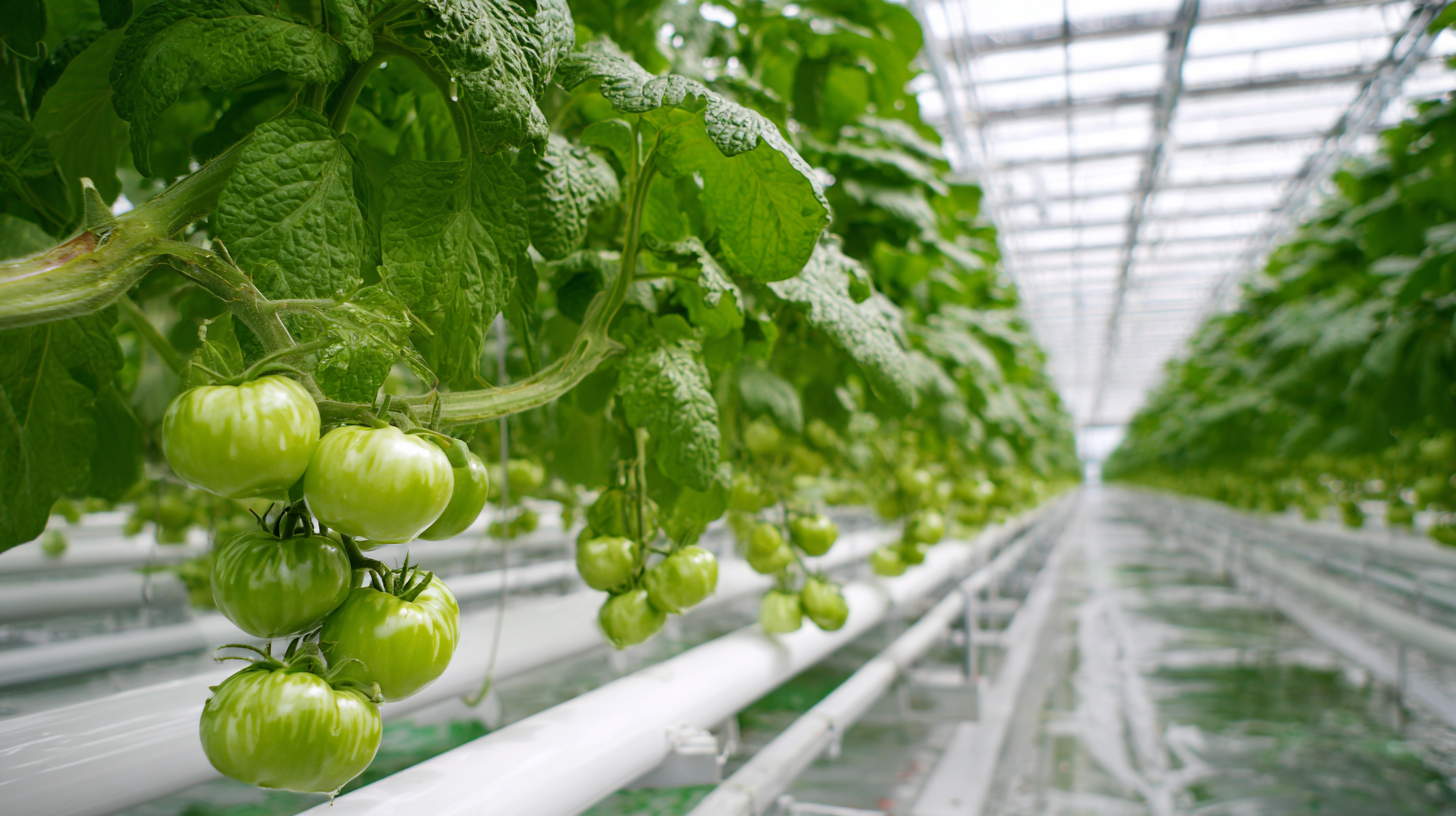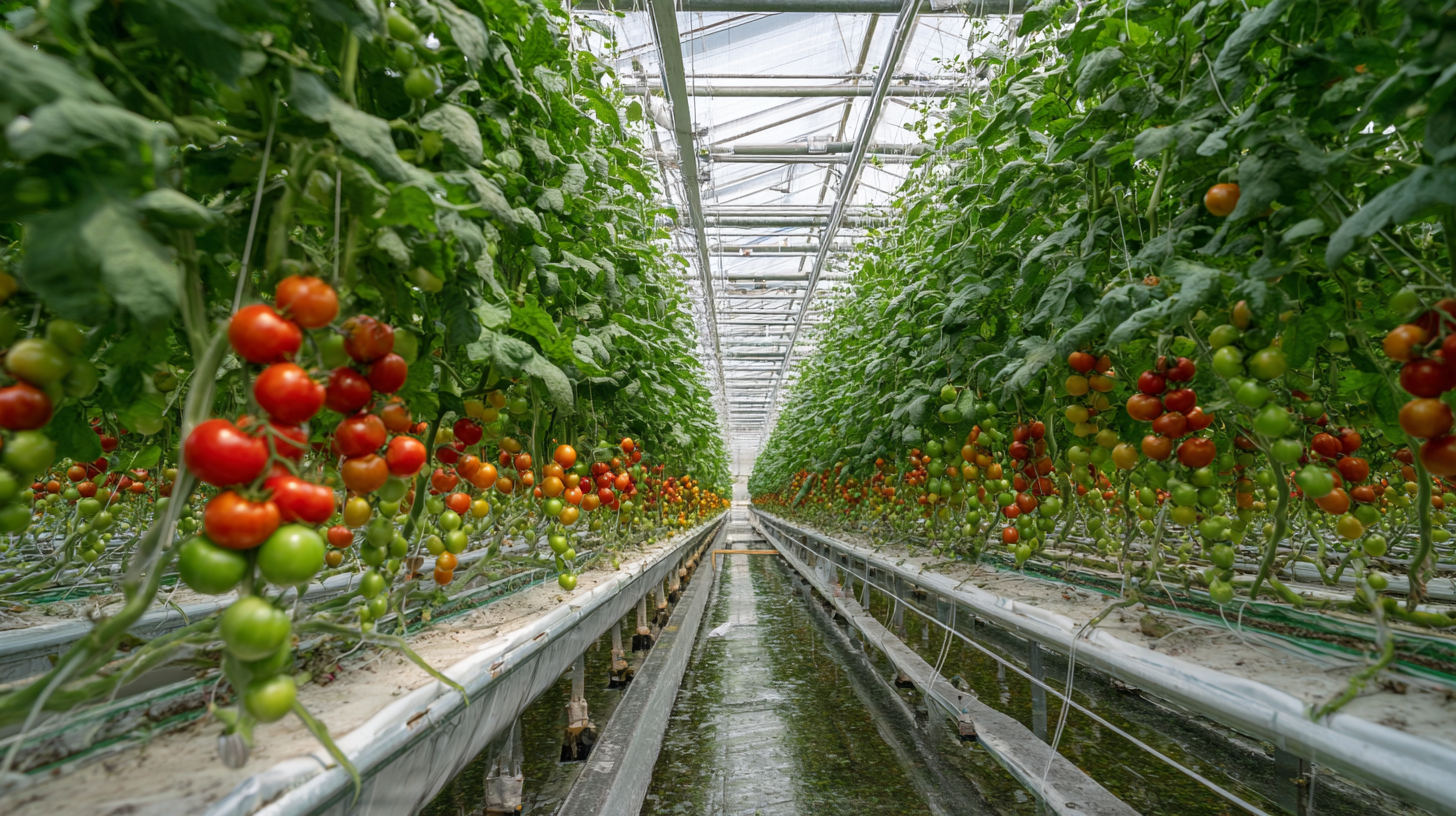
Global Market Insights on Best Vegetable Greenhouse Trends for 2025 with Real World Examples
The vegetable greenhouse market is poised for significant growth, driven by increasing demand for fresh produce, technological advancements, and sustainable agricultural practices. According to a recent report by Grand View Research, the global greenhouse market is projected to reach USD 40.6 billion by 2025, with vegetable production in controlled environments being a major contributor. As consumers become more health-conscious and environmentally aware, the focus on high-quality, locally-sourced vegetables is intensifying. Innovative trends such as vertical farming, hydroponics, and smart greenhouse technologies are redefining the traditional vegetable greenhouse landscape, enabling higher yields and resource efficiency. This blog will explore the best practices and emerging trends within the vegetable greenhouse sector, spotlighting real-world examples and China’s role as a leading manufacturer in the market, demonstrating how they are shaping the future of sustainable agriculture globally.

Emerging Sustainable Technologies in Vegetable Greenhouses for 2025
As we approach 2025, the vegetable greenhouse industry is poised to integrate several emerging sustainable technologies that promise to revolutionize cultivation practices. One notable trend is the adoption of vertical farming techniques within greenhouses. By utilizing vertical space, these systems maximize crop yields and reduce land usage, promoting more efficient resource management. For instance, companies like AeroFarms are setting the standard by implementing aeroponic systems that significantly cut water consumption while enhancing plant growth cycles.
Another pivotal technology gaining traction is the use of renewable energy sources such as solar panels and wind turbines to power greenhouse operations. Innovations in energy efficiency not only reduce the carbon footprint of vegetable production but also decrease operational costs. Greenhouses are increasingly being designed with integrated energy systems that allow farms to generate clean energy, thus supporting the shift towards sustainable agriculture. Moreover, smart sensors and AI-driven analytics are optimizing climate control within these facilities, ensuring that plants receive the precise conditions needed for optimal growth. This synergy of technology in managing greenhouse environments marks a significant step forward in sustainable farming, paving the way for more resilient food systems.

Key Markets Driving the Adoption of Advanced Greenhouse Designs
The adoption of advanced greenhouse designs is becoming increasingly crucial as global markets respond to pressing climate challenges. With the building sector responsible for 37% of total carbon emissions, innovative approaches to agriculture are essential in mitigating climate impacts. Reports indicate that integrating advanced technologies in vegetable greenhouse production can significantly enhance energy efficiency and crop yield. For instance, the implementation of precision agriculture tools within controlled environments has shown to increase productivity by up to 30%, highlighting a path towards sustainable food production amidst climate concerns.
Key markets driving this trend include the European Union, which is committed to reducing greenhouse gas emissions by at least 55% by 2030 through initiatives like the Fit for 55 package. This legislative framework promotes advanced greenhouse infrastructures alongside other green technologies, fostering a transition to net-zero emissions. Similarly, countries focused on agtech innovations are reimagining agricultural practices to enhance resilience and minimize ecological footprints. For example, smart greenhouse systems utilizing AI and IoT technologies not only optimize growing conditions but also reduce water usage by approximately 20-30%, addressing both economic and environmental objectives in the agricultural sector.
Real-World Case Studies: Successful Vegetable Greenhouses Worldwide
The vegetable greenhouse sector is experiencing transformative innovations, with hydroponics emerging as a frontrunner in sustainable agricultural practices. According to a recent review, hydroponics not only optimizes space and resources but also adapts to climate unpredictability, significantly enhancing crop yield. For instance, potato mini-tuber cultivation using hydroponic systems has recorded efficiency improvements of over 30% compared to traditional methods. This case exemplifies how cutting-edge technologies are essential for meeting the growing global food demands while maintaining sustainability.
In another remarkable example, the Netherlands has positioned itself as a beacon of agricultural ingenuity, demonstrating a cohesive integration of advanced soil management practices. A focus on interdisciplinary approaches has led to improved soil health and increased productivity across various crops, indicating that specialized strategies can yield significant economic benefits.
Furthermore, the integration of vertical farming techniques introduced by leading companies has revolutionized food production methods. These farms use less land and water while curbing food miles, thus contributing to both environmental preservation and food security. Such real-world case studies highlight the necessity of embracing innovative technologies to ensure the future success of vegetable greenhouses globally.
Innovations in Climate Control for Enhanced Vegetable Growth
The future of vegetable greenhouse production is increasingly being shaped by innovations in climate control technologies. According to a report by MarketsandMarkets, the global greenhouse market is projected to grow from $28.5 billion in 2020 to $43.5 billion by 2025, with climate control systems playing a pivotal role in this expansion. These systems not only optimize growth conditions but also enhance resource efficiency, reducing water and energy consumption by up to 30%. Advanced solutions, such as automated ventilation and heating, ensure that temperature and humidity levels are maintained at ideal ranges, which is crucial for maximizing yields in a controlled environment.

Furthermore, companies are leveraging IoT (Internet of Things) technologies to intensify climate management. Smart sensors can monitor real-time data and automatically adjust conditions, mitigating the risks of climate variability. For instance, a case study published by the International Society for Horticultural Science highlighted a greenhouse in the Netherlands that utilized such technologies, resulting in a 20% increase in tomato production while cutting energy costs by 15%. These real-world examples underscore that investing in innovative climate control solutions is not merely a trend but an essential strategy for sustainable vegetable farming in the years ahead.
Market Insights: Consumer Trends Shaping the Future of Vegetable Production
As we look towards 2025, consumer trends are significantly influencing the future of vegetable production within greenhouse markets. Sustainability remains a top priority, with more consumers opting for locally-grown, organic produce. This shift not only aims to reduce carbon footprints but also promotes healthier eating habits. Greenhouse operators are adapting by integrating more sustainable practices such as rainwater harvesting and renewable energy systems, aligning production with consumer values.
**Tip:** Greenhouse growers should consider implementing water-efficient irrigation systems and exploring organic pest management solutions to meet the rising demand for eco-friendly produce.
Moreover, the appetite for diversity in vegetable options is growing. Consumers are now seeking unique and exotic vegetables that were previously underrepresented in mainstream markets. This trend encourages greenhouse cultivators to innovate and diversify their crop selections, ensuring they cater to evolving consumer palates.
**Tip:** Utilize social media platforms for feedback on new vegetable varieties; engaging with customers can provide insights into upcoming trends and preferences, helping businesses to stay ahead of the competition.
